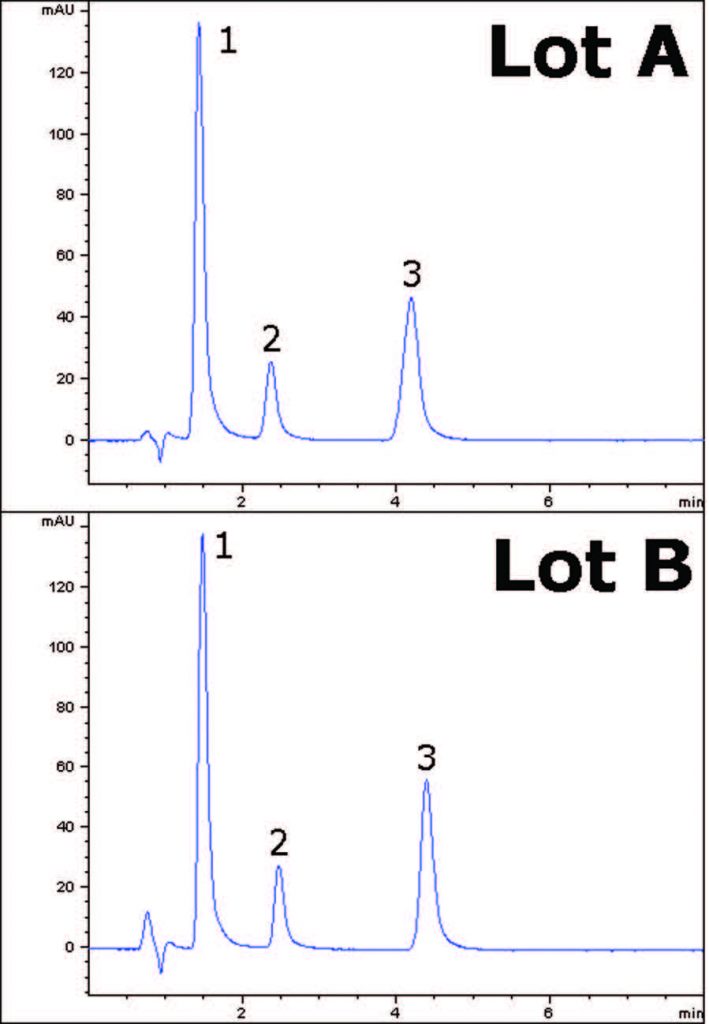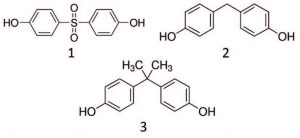Separation of Epoxy Resins Found in Consumer Products & Food
Many consumer products are using Bisphenol A (BPA) alternatives in recent years due to health concerns regarding toxicity of these compounds. An analytical HPLC method is shown in this AppNote to distinguish amongst these various Bisphenol compounds potentially in chemicals and foods. Excellent resolution was obtained for all three analytes.
This method could be applied to analyses of BPA or BPA-free consumer products, the latter of which may still contain other harmful Bisphenol compounds such as Bisphenol F (BPF) or Bisphenol S (BPS).


Peaks:
1. Bisphenol S
2. Bisphenol F
3. Bisphenol A
Method Conditions
Column: Cogent Bidentate C18 2.o™, 2.2μm, 120Å
Catalog No.: 40218-05P-2
Dimensions: 2.1 x 50mm
Mobile Phase: 65:35 DI Water / Acetonitrile with 0.1% Formic Acid (v/v)
Injection vol.: 2.0 µL
Flow rate: 0.2mL / minute
Detection: UV @ 275nm
Sample Preparation: 1000mg / L Stock Solutions of each analyte were prepared in a Methanol diluent. Then 100mg / L dilutions of each Solution were prepared as well as a mixture of all three analytes.
Note: BPA is a synthetic compound widely used in industry as an epoxy resin, a polycarbonate, and an antioxidant in polyvinyl chloride (PVC) plastics. Epoxy resins are used as inner surface coatings for food and beverage cans. Polycarbonates are used in fabrication of plastic food containers (even infant feeding bottles). PVC is in a variety of products which come in contact with food. Even at low concentrations, chronic exposure to BPA is of toxicological concern. It has estrogen-like effects and causes a variety of adverse symptoms (e.g. genital malformations, testicular abnormalities, impairment in fertility or sexual functions).
Attachment
No 329 Bisphenol A, S, & F Analyzed with HPLC pdf 0.4 Mb Download File


